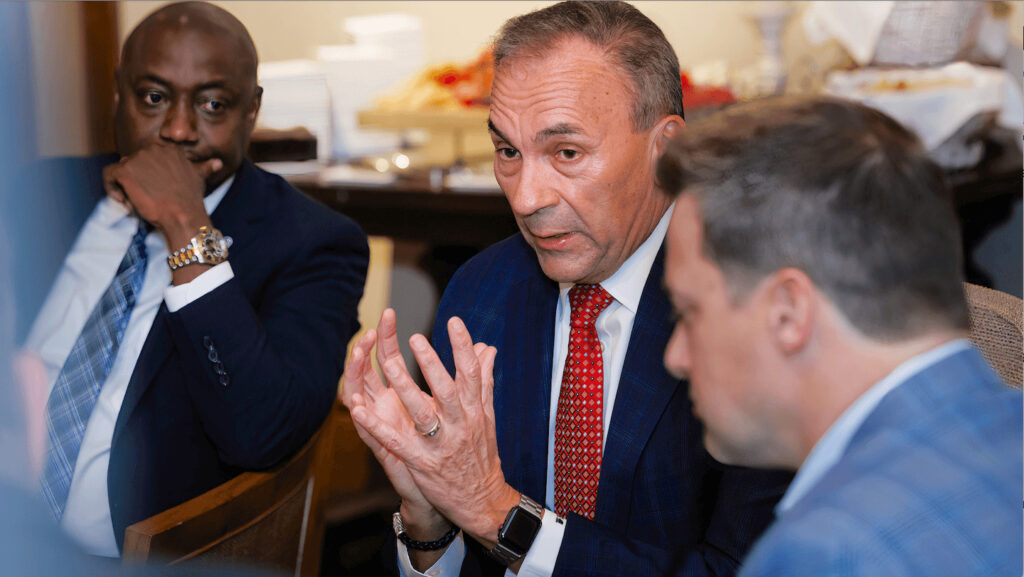
As senior living providers struggle to recruit and retain employees, industry veterans are looking at all options in their workforce recovery efforts.
Andrew Carle, an adjunct and lead faculty member for Georgetown University’s administrator training program, said during a special McKnight’s Veteran VIP Conversation at the 2024 McKnight’s Pinnacle Awards event last week that the best employees anyone has already are on the payroll, so providers should work to keep them.
Carle, a Pinnacle Industry Ally Award winner, said that operators need to recognize the contributions of existing staff members while developing their talents so they can move to the next level in an organization.
A “huge mistake” made by providers was not valuing the workforce — something that became glaringly obvious during the COVID-19 pandemic, according to A.G. Rhodes CEO Deke Cateau.
Providers, he said, adopted a consumerism stance, believing the mantra that the resident is always right. That, said Cateau, a Pinnacle Agent of Change Award winner, created a hierarchical system that failed to emphasize the role of the workforce in caring for residents.
“The reality is, the main part of the labor force — CNAs and LPNs — they lay on the bottom of that hierarchy,” Cateau said. “We can do a lot of patchwork, but unless we flip that hierarchical system that we have in our communities, we’re going to stay like this.”
Roberto Muñiz, president and CEO of Piscataway, NJ-based Parker Health Group and LeadingAge board chair, agreed, saying it’s time to start recognizing how valuable the workforce is to the success of long-term care providers. The Pinnacle Inspiration Award winner said that providers need to start validating employees and the passion and compassion they bring to their roles.
Clif Porter, senior vice president of government relations for the American Health Care Association / National Center for Assisted Living, said he’s heard success stories from providers who provide the basics — education and training — as well as “wraparound” services such as housing, daycare and transportation.
“There are a myriad of innovations going on around the country. We have to think differently, approach it differently,” Porter said. “There is not one answer. It’s not just immigration; it’s not just being good to the employees. We have to do it all now.”
Addressing challenges through immigration reform
One area all of the leaders agreed on was the necessity for immigration reform.
Argentum recently released an update to its 2023 white paper, “The Value of Assisted Living in America,” which showed that the ongoing workforce challenges plaguing the industry will require more than 3 million workers in senior living by 2040, with more than 20 million workers needed across all long-term care settings.
The sheer number of workers needed, Carle said, should have the entire senior living industry on Capitol Hill “screaming about immigration reform.”
“We can talk all day long about compensation and training and employee relations. We’re not going to have enough people,” he said, adding that 80% of assisted living communities are understaffed, and good employees aren’t going to want to work double shifts every night.
“It’s not going to matter how well you treat your employees. It won’t matter until you give them what they really need, and that’s more people on your team so they don’t have lives that are so stressed out and miserable they leave the profession or never enter it,” Carle said. “We can’t win until we fix this equation.”


